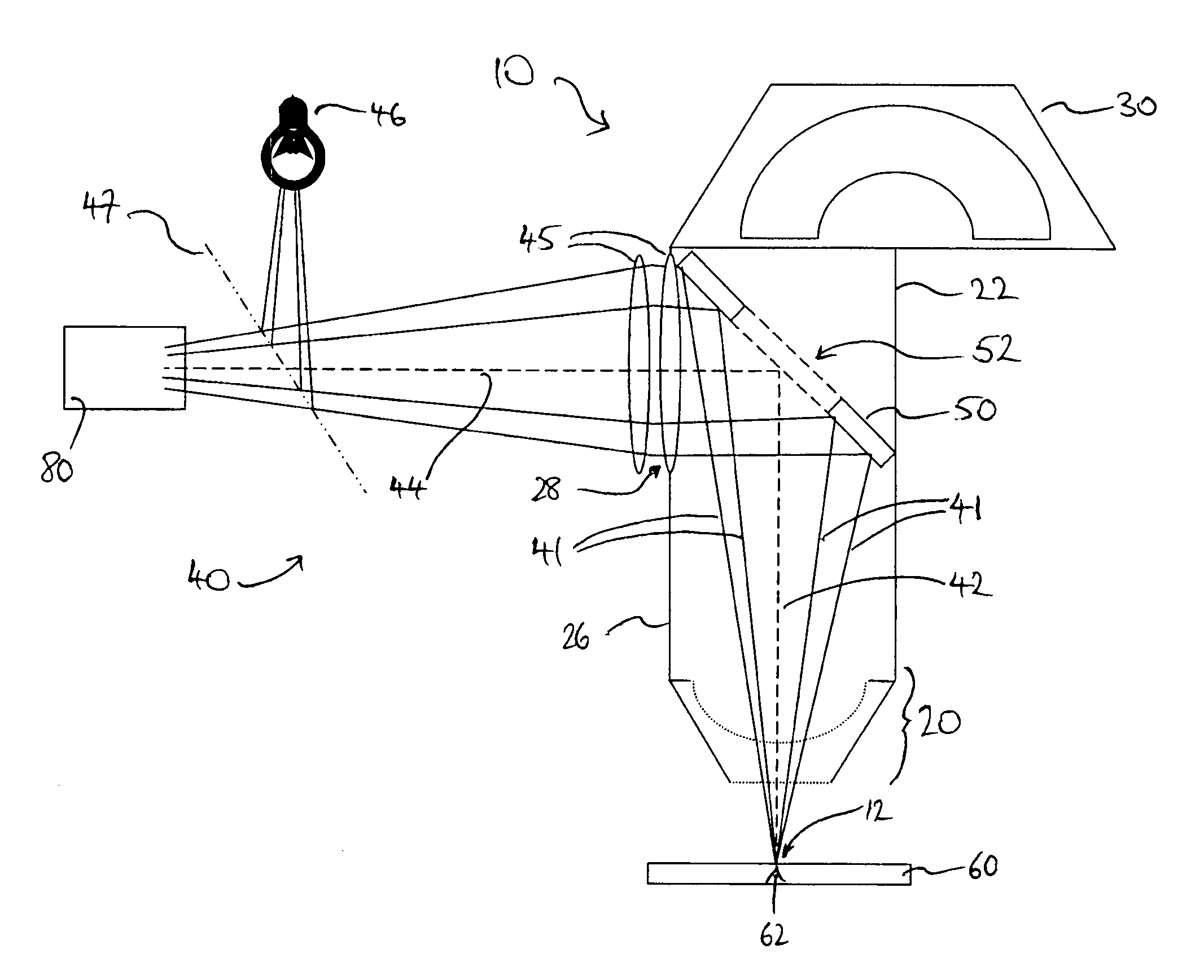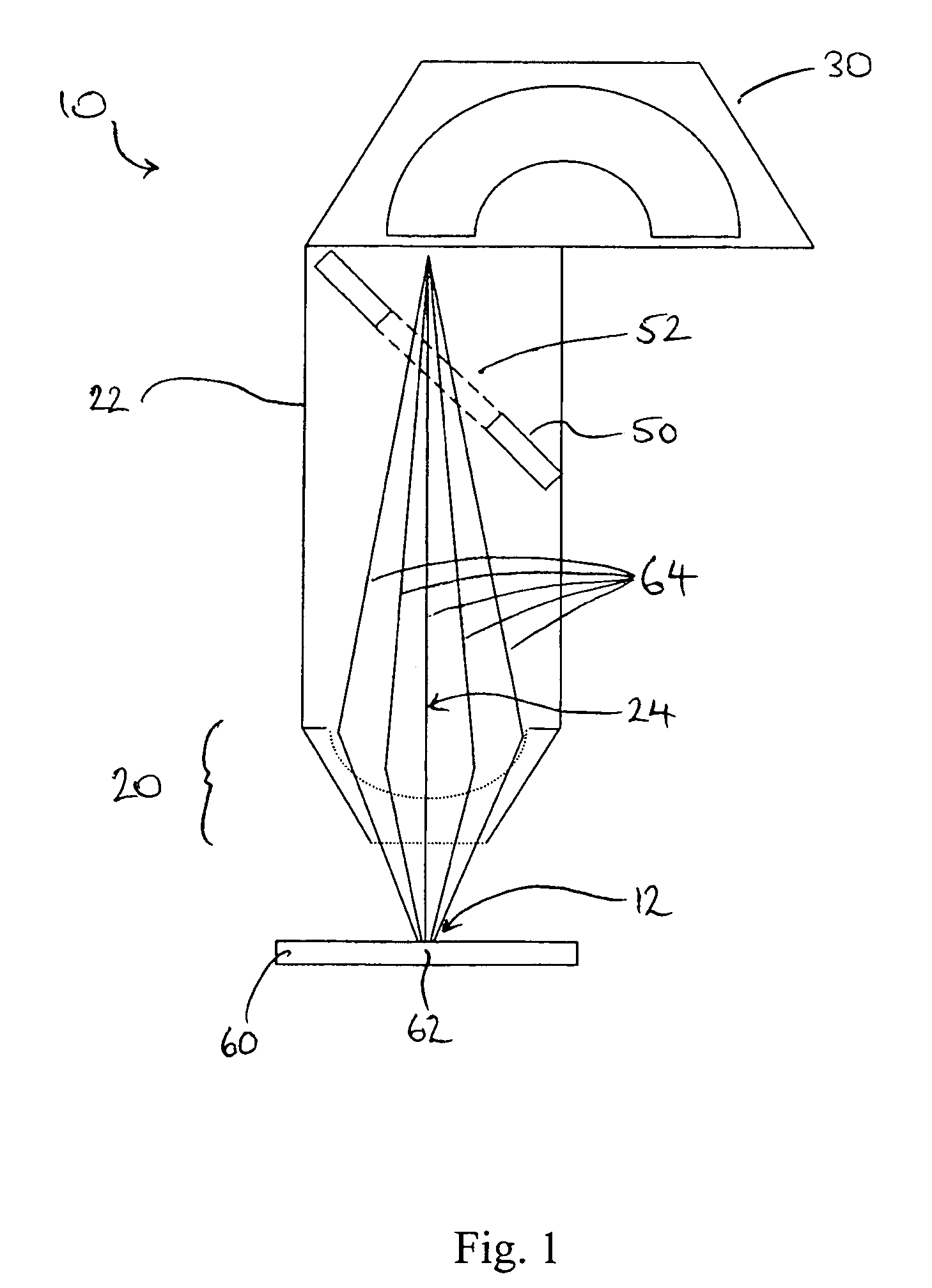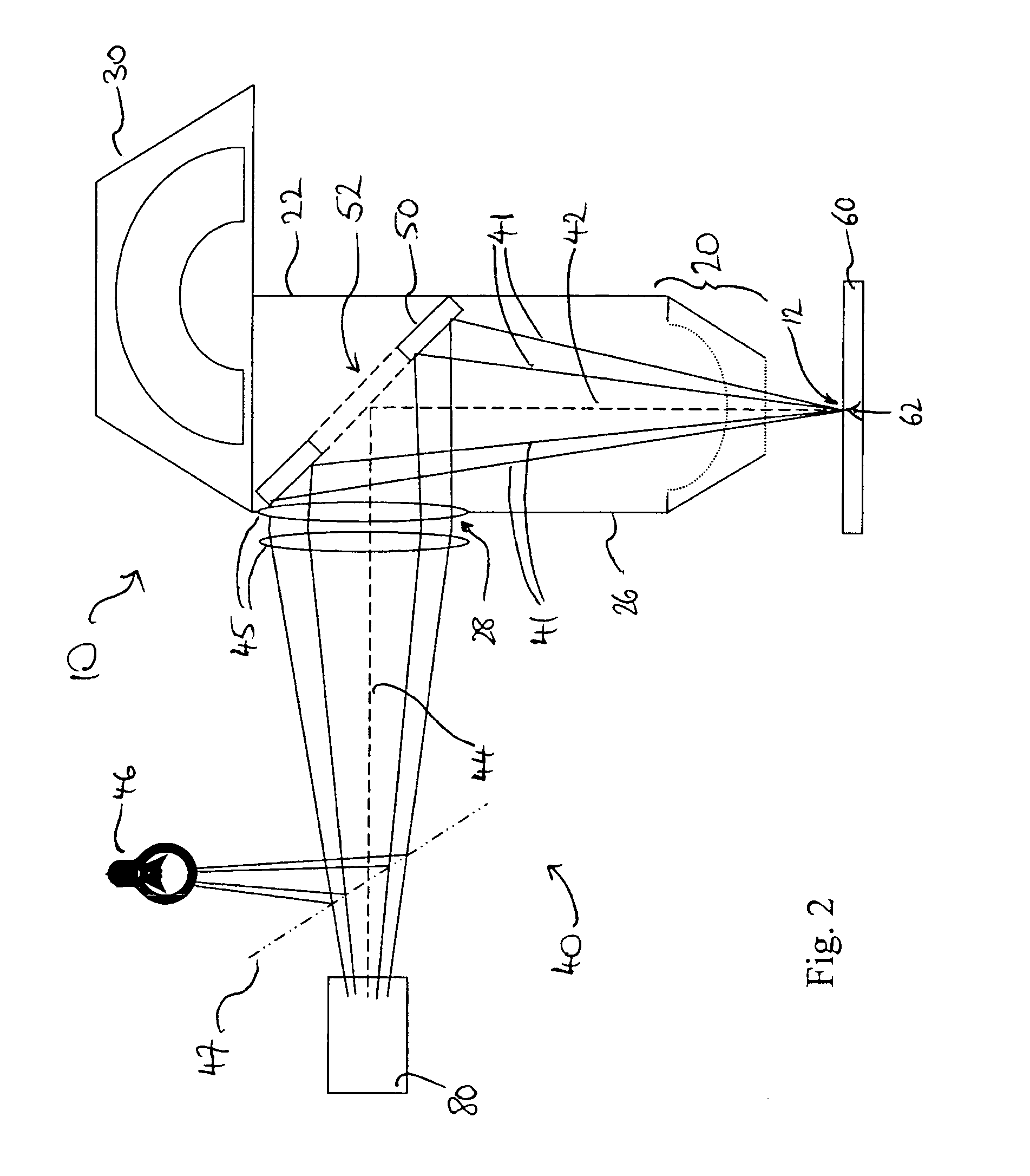Spectrometer for surface analysis and method therefor
a surface analysis and spectrometer technology, applied in the direction of spectrometry/spectrophotometry/monochromators, instruments, optical radiation measurement, etc., can solve the problems of reducing image quality, affecting the quality of viewed images, and affecting the quality of sample viewing geometry, etc., to achieve the effect of reducing obstruction, small cross-section, and small area
- Summary
- Abstract
- Description
- Claims
- Application Information
AI Technical Summary
Benefits of technology
Problems solved by technology
Method used
Image
Examples
Embodiment Construction
[0056]Referring to FIG. 1, there is shown a spectrometer 10, suitable for surface analysis of a sample 60. The spectrometer 10 is shown schematically in this embodiment and illustrates exemplary trajectories of secondary charged particles emitted from a surface of the sample 60. The spectrometer 10 comprises a collection lens arrangement 20 arranged in a vacuum collection chamber 22. Although not shown, for clarity, the vacuum collection chamber 22 forms part of a vacuum chamber which also encloses the sample.
[0057]The collection lens arrangement 20 is disposed about a collection axis 24 (which happens to be coincident with one of the illustrative charged particle trajectories 64). The collection lens arrangement 20 is located at an end of the collection chamber 22 adjacent to the analysis area 12 of the spectrometer, for reception of secondary charged particles emitted from an area of analysis 62 on the surface of a sample 60 when located at the analysis area, in use.
[0058]At the o...
PUM
| Property | Measurement | Unit |
|---|---|---|
| angle | aaaaa | aaaaa |
| angle | aaaaa | aaaaa |
| grazing angle | aaaaa | aaaaa |
Abstract
Description
Claims
Application Information
 Login to View More
Login to View More - R&D
- Intellectual Property
- Life Sciences
- Materials
- Tech Scout
- Unparalleled Data Quality
- Higher Quality Content
- 60% Fewer Hallucinations
Browse by: Latest US Patents, China's latest patents, Technical Efficacy Thesaurus, Application Domain, Technology Topic, Popular Technical Reports.
© 2025 PatSnap. All rights reserved.Legal|Privacy policy|Modern Slavery Act Transparency Statement|Sitemap|About US| Contact US: help@patsnap.com



